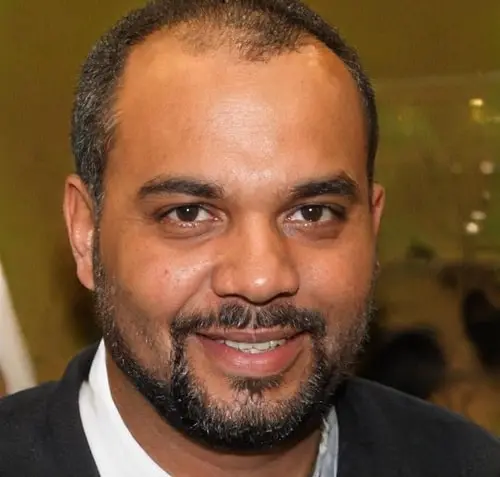Founded in 1952 by J. R. D. Tata and Simone Tata at the behest of Prime Minister Nehru, Lakmé emerged as India’s answer to imported cosmetics . Today, under Hindustan Unilever since 1998, the brand holds an unrivalled position in Indian beauty culture—from drugstore staples to high-fashion runways. As of January 2025, Lakmé continues to dominate, supported by a ₹3.48 billion revenue in FY2023 and over a 19% year-on-year growth . Let’s break down what makes it strong—and what could hold it back.

Strengths
Iconic Brand Legacy & Fashion Leadership: With 70+ years in the Indian beauty space, Lakmé is synonymous with trust and credibility. Its flagship platform, Lakmé Fashion Week, cements its status as a fashion authority.
Extensive Product Range & R&D: Offering everything from lipsticks and foundations to salon-grade skincare, Lakmé benefits from Hindustan Unilever’s innovation engine—fueling product development and wide accessibility .
Powerful Distribution Network: Lakmé’s presence is vast: pharmacies, modern retail, ecommerce (including its 2018-launched platform), and nearly 485+ Lakmé salons across India.
Celebrity & Influencer Appeal: With Bollywood ambassadors and robust influencer marketing, Lakmé enjoys strong recall among millennials and Gen Z, bolstered by Fashion Week tie-ins, digital campaigns, and media coverage .
Weaknesses
Limited Premium & Global Presence: Despite mass-market clout, Lakmé has underperformed in premium, organic, and international segments—leaving room for global and indie competitors .
Perception as a Value-Brand: While “value-for-money” is a strength, it also pigeonholes Lakmé, limiting its prestige appeal. Its attempts to bridge this gap (e.g., Absolute line) struggle against entrenched mass-market perceptions.
Quality Inconsistency: Reports suggest uneven product consistency across price tiers, and salon experience is sometimes criticized for varying service standards .
Male Segment Underrepresentation: The brand’s portfolio is heavily female-centric, overlooking the fast-growing men’s grooming market—a segment ripe for expansion.
Opportunities
Organic, Clean & Premium Launches: With Indian demand surging for sustainable, natural beauty, Lakmé is well-positioned to launch eco-friendly premium lines—a stark contrast to competitors like Forest Essentials and Mamaearth.
Digital Acceleration & Personalization: Walmart of beauty: gripping digital transformation through personalized e‑commerce, virtual try‑ons, influencer tie-ins, and improved website UX can deepen consumer engagement .
Men’s Grooming Launchpad: A dedicated line for male consumers—skincare, beard care, styling—can open fresh revenue streams, tapping into a fast-growing sector .
Salon Expansion Beyond Metros: Lakmé Salons could scale into Tier‑2 and -3 cities, offering salon services as experiential touchpoints to build deeper brand affinity.
International Foray & Designer Co‑Creations: By targeting Indian diasporas and aligning with fashion designers or sustainable partners, Lakmé can elevate its global footprint—mirroring Lakmé Fashion Week’s FDCI-backed resurgence.
Threats
Fierce Competition from Agile Brands: Digital-first brands (Sugar, MyGlamm), global titans (Maybelline, L’Oréal), and niche indie players are innovating faster—challenging Lakmé’s market share.
Shifting Trends & Value Demands: The clean beauty wave and demand for transparency press Lakmé to evolve quickly—else risk perceived obsolescence among the younger demographic.
Counterfeit and Pricing Pressures: Fake products dent brand trust, especially in tier-2 / rural markets. Simultaneously, indie labels often offer similar quality at lower price points .
Regulation & Sustainability Mandates: Stricter ingredient and packaging norms could heighten compliance costs. Poor eco-credentials might hurt Lakmé’s green positioning.
Economic Volatility: Consumer confidence can dip due to global or domestic downturns, lowering discretionary beauty spend—especially in non-metro pockets.
Future Outlook & Strategic Playbook
Lakmé stands at an inflection point. To build on its strengths, it should:
- Launch a Green Premium Sub‑Brand that delivers organic formulations with upscale packaging—aimed at younger consumers and retailing via Nykaa, Amazon, and owned channels.
- Roll Out a Men’s Grooming Portfolio, featuring ease-of-use solutions like face mists, beard oil, and skin-friendly basics.
- Digitally Enhance Customer Experience with virtual makeup try-ons, lifestyle quizzes, and personalized subscriptions—while improving e‑commerce UX and SEO.
- Broaden Salon Network into hinterlands, integrating loyalty programs and product trials to convert footfall into recurring buyers.
- Go Global via Digital First—starting with countries with strong Indian diaspora (Middle East, UK), and offering cross-border shopping, possibly co-branded with Indian designers at Fashion Week tie-ins.
- Strengthen Anti‑Counterfeit Measures by using QR codes, tamper-proof packaging, and consumer awareness campaigns.
Conclusion
In mid‑2025, Lakmé stands on both legacy and opportunity. Its brand equity, product range, distribution, and fashion partnerships make it a powerhouse. Yet to stay ahead, it must amp up premium and green offerings, embrace digital transformation, unlock the men’s segment, and expand internationally. By growing its salon footprint deeper into India and responding to sustainability norms, Lakmé can redefine mass-market beauty in the country—and chart new global horizons.

Meet Suhas Harshe, a financial advisor committed to assisting people and businesses in confidently understanding and managing the complexities of the financial world. Suhas has shared his knowledge on various topics like business, investment strategies, optimizing taxes, and promoting financial well-being through articles in InvestmentDose.com


